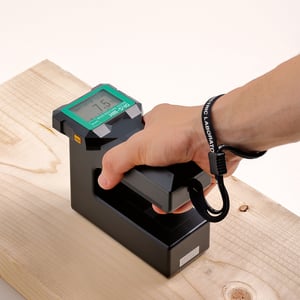 As the voice of Kett on Twitter, LinkedIn and Facebook, I am familiar with our products, but have had little opportunity to interact with our customers. So, John Bogart, Kett’s CEO, invited me to find out more at my first tradeshow. I had no idea what to expect as I boarded the plane heading from Denver to Chicago to join John Bogart, our Japanese colleagues and several thousand analytical chemists at Pittcon14.
As the voice of Kett on Twitter, LinkedIn and Facebook, I am familiar with our products, but have had little opportunity to interact with our customers. So, John Bogart, Kett’s CEO, invited me to find out more at my first tradeshow. I had no idea what to expect as I boarded the plane heading from Denver to Chicago to join John Bogart, our Japanese colleagues and several thousand analytical chemists at Pittcon14.
The first morning John took me to the enormous McCormick center to set up the booth and familiarize myself with many of the instruments. Having worked in labs for five years, I was prepared for some pretty complicated protocols, and a bit nervous to be under the scrutiny of some of the most adept scientists in the world. However, it took less than 30 minutes for John to walk me through the applications and operations of about 20 different test instruments. I felt comfortable and confident showing off the range of grain moisture meters (the riceter, PM450 and PM650), moisture balances (the new FD660 and FD720), friction and surface analyzers, specialized portable moisture meters (paper, universal, wood, concrete) and the entire line of KJT moisture analyzers and composition analyzers.
After picking up coffees and our charming Japanese colleagues, Kota-san and Chicky-san, along with longtime Kett team member, Dave, the next morning, we headed to the center to for the opening of Pittcon. I quickly learned the key question to ask attendees:
“Do you measure moisture or composition in your lab?”
While a few answered no, the majority of R&D, QA and QC testers answered in the affirmative, usually followed by, “But we already have a system that works for us.”
At that point, I’d simply reply,
“What’s your product?”
For the most part, the reluctant answer would be some variant of pharmaceuticals or food, with a smattering of chemists working with various industrial products ranging from diesel fuels to metallic compounds. At this point, I had their attention, so I’d continue,
“So, what are you using now to test your moisture? Karl Fisher or a loss on drying technique?”
I was AMAZED by their responses - nearly 100% of the analytical chemists we spoke to were using exclusively one of these two techniques. None were using NIR technology as their primary method! At that point, my job was done. I simply said,
“Would you mind if I showed you something that might just knock your socks off? It only takes 15 seconds!”
Who could resist that kind of temptation? I quickly realized our booth had the sideshow at the Pittcon fair.
I would walk them over to our KJT230 Near Infrared (NIR) moisture analyzer, ask them to pick out a sample from our mix of wood chips, grains, rocks and powders, that resembled their product, and place it under the sensor. The machine would beep, start rotating the sample and pop out a representative average moisture percentage on the LED display in less than 10 seconds. That’s when jaws dropped, “WOW” was uttered loudly and one chemist even told me,
“I know someone in my lab who would give you a big hug right now for that!”
Click here to see the demonstration
Why?
Karl Fisher (KF) and Loss-on-Drying (LOD) are excellent methods for determining moisture in samples with unknown composition. In fact, these tests are necessary for initially calibrating our instruments. However, KF and LOD are incredibly time consuming. I spoke to scientists who are averaging 15-30 minutes per moisture test, and some who are spending days on end running moisture tests with these methods. Additionally, both require sample preparation and result in sample degradation. KF titrations can only measure a tiny sample of the total product and have a costly clean-up. If your product is a liquid or solid, has a consistent makeup, e.g. pharmaceutical tablets or powders, pellets, plastics, rubber, toffees, gels, grains, grasses, woods, web materials, or metals, you can use NIR to get instant, accurate (to 0.001%), repeatable results instantly.
What surprised me the most was speaking to scientists working in the labs or process line of some of the best companies in the world - Coca-Cola, Kelloggs, Gore (of Goretex), Wrigley and Motorola - who had no direct experience with informed NIR technology. Having spoken to these customers in person, I’m more compelled than ever to meet them wherever they may be and show off our instant, portable moisture testers, and after an absolutely lovely week with the Kett team, I simply cannot wait to check out my next trade show!
Learn More About NIR Technology Here
Learn How The Right Moisture Meter Improves Food Manufacturer's Operations [CASE STUDY]
Plastic Strapping Manufacturer Saves With A Kett Moisture Analyzer [CASE STUDY]
Kett Moisture Meter KJT130 Handheld v's KJT230 Desktop FAQ
Learn How To Optimize Food Production With The Right NIR Analyzer
How To Buy The Right NIR Analyzer For Your Needs and Optimize ROI
KJT130 Moisture Meter: 10 Benefits Of Taking The Lab To The Sample
Download brochures on various NIR Analyzers here



